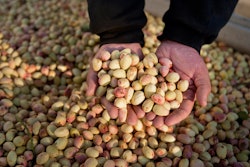(Editor's note: This article originally appeared in the March/April 2016 print issue of Food Manufacturing)
Intentional adulteration is one of the last efforts in preparing for the Food Safety Modernization Act (FSMA), but one of the most significant threats businesses should be aware of and proactively prepare for. To ensure your food defense plan is designed to facilitate compliance with this final FSMA rule, it’s important to ensure your organization understands the different types of intentional adulteration and its implications, the importance of conducting a vulnerability assessment and helpful tools developed by the FDA to help build a plan for threats that are specific to your business.
Understanding the Source of Intentional Adulteration Threats
Intentional adulteration may be carried out by external terrorists, but may also come from disgruntled employees. These threats should be taken extremely seriously because of their potential public health and economic impact. Security professionals and law enforcement agree that, although acts of terrorism are a significant threat, disgruntled employees who already have access to the site pose a more likely threat at a smaller scale. However, when businesses prepare for the consequences of a disgruntled employee, they’re putting the right processes in place to protect themselves should a larger event take place, such as an extreme terrorist attack. There’s also a chance that these two forces can combine if terrorists use an internal employee to infiltrate the business for the purpose of conducting the act.
Protecting Your Business with a Vulnerability Assessment
To protect your business against threats in the most efficient way possible, conducting a vulnerability assessment is a great place to start. By looking at all of the possible vulnerabilities that can impact your business, it’s easier to determine how to protect against them and build an appropriate plan based on these findings.
Two common approaches of vulnerability assessments are the operational risk method and the checklist assessment method. The operational risk method helps to determine the level of risk and the resulting consequences of contamination. The checklist assessment method, on the other hand, uses a checklist or comparison to give you a sense of gaps as compared to best practices. This method does not reflect everything that happens before or after a contamination occurs, thus not giving a proper sense of the consequences and the overall severity of a threat. Both of these methods evaluate the specific activity in your facility and help to develop a plan for individualized operations and a proper mitigation strategy. When determining which method is right for your business, taking a comprehensive look at the threats your business faces, as well as the resulting consequences of these threats, is imperative.
Tools to Help Build a Personalized Food Defense Plan
There are certain tools that the FDA has developed in preparation for FSMA, many that are particularly important to be aware of when conducting a vulnerability assessment. Knowing which tools to leverage will make the FSMA rulings less daunting and easier to implement. The first, the CARVER + Shock method, was created by the FDA to score and rank your operations based on seven attributes – criticality, accessibility, recuperability, vulnerability, effect, recognizability and shock – to ultimately determine your greatest overall risk and vulnerability. Additionally, the Food Defense Plan Builder tool was created to supplement and simplify the CARVER + Shock method by focusing on accessibility and vulnerability, rather than the seven attributes the former method took into consideration.
Of course, there are advantages and disadvantages to each method, so it’s important to understand which one will work for your individual business needs. Each tool was designed to assist owners and operators of food facilities with developing personalized food defense plans for their organizations. The CARVER + Shock method, while comprehensive and specific, is time-consuming and doesn’t give results until the end of the analysis. Many businesses don’t have the patience to wait until the end of the analysis, and end up abandoning the process all together. The Food Defense Plan Builder was purposely built to be more intuitive, while giving similar results to the CARVER + Shock method. However, it doesn’t necessarily take the health impact or severity of each operation into account (i.e. how many people would get sick).
The Final Countdown
When preparing for FSMA’s final Intentional Adulteration rule in May, it’s important for businesses to be prepared and protected. It’s not enough to wait until an incident occurs, which is why having a proactive food defense strategy in place beforehand can help to avoid costly fines, increase safety and maintain brand integrity.






















